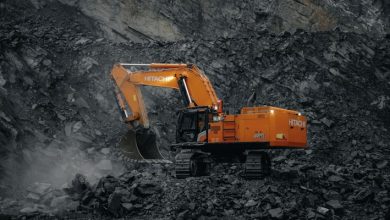How to Start a Cryptocurrency Mining Business

- How Cryptocurrency Mining Works
- Choosing the Right Hardware for Mining
- Setting Up a Mining Rig
- Selecting the Best Location for Your Mining Operation
- Calculating the Costs and Potential Profits
- Staying Updated on Cryptocurrency Trends
How Cryptocurrency Mining Works
Cryptocurrency mining is the process of validating transactions on a blockchain network by solving complex mathematical problems. Miners use powerful computers to compete against each other in solving these puzzles, with the first miner to solve the problem being rewarded with a certain amount of cryptocurrency.
Miners verify transactions by grouping them into blocks and adding them to the blockchain. This process requires a significant amount of computational power, which is why miners typically use specialized hardware such as ASICs or GPUs to mine cryptocurrency efficiently.
Once a miner successfully adds a block to the blockchain, they are rewarded with newly minted cryptocurrency as well as transaction fees. This reward incentivizes miners to continue validating transactions and securing the network.
As more miners join the network, the difficulty of mining increases, requiring even more computational power to solve the mathematical problems. This competition among miners helps to secure the network and prevent fraudulent transactions.
Overall, cryptocurrency mining plays a crucial role in maintaining the integrity and security of blockchain networks. By participating in mining, individuals can contribute to the decentralized nature of cryptocurrencies and potentially earn rewards for their efforts.
Choosing the Right Hardware for Mining
When starting a cryptocurrency mining business, it is crucial to choose the right hardware to ensure optimal performance and efficiency. There are several factors to consider when selecting hardware for mining operations.
One key consideration is the **type of cryptocurrency** you plan to mine. Different cryptocurrencies require different types of hardware for efficient mining. Research the hardware requirements of the specific cryptocurrency you are interested in mining to determine the most suitable hardware for your operation.
Another important factor to consider is the **hash rate** of the hardware. The hash rate refers to the speed at which a mining machine operates. Higher hash rates typically result in faster mining and increased chances of successfully mining a block. Look for hardware with a high hash rate to maximize your mining efficiency.
Additionally, consider the **power consumption** of the hardware. Mining operations can be energy-intensive, so choosing hardware with low power consumption can help reduce operating costs and increase profitability. Look for energy-efficient hardware to minimize electricity expenses.
Furthermore, **reliability** is crucial when selecting mining hardware. Choose reputable brands and models with a proven track record of reliability to minimize downtime and ensure continuous operation. Investing in reliable hardware can help prevent costly disruptions to your mining operation.
In conclusion, choosing the right hardware for mining is essential for the success of your cryptocurrency mining business. Consider factors such as the type of cryptocurrency, hash rate, power consumption, and reliability when selecting hardware for your mining operation. By carefully evaluating these factors, you can optimize your mining efficiency and profitability.
Setting Up a Mining Rig
Setting up a mining rig is a crucial step in starting a cryptocurrency mining business. It involves assembling the necessary hardware components and configuring them to mine cryptocurrencies effectively. Here are the key steps to follow when setting up your mining rig:
- Choose the right hardware: Selecting the right hardware components is essential for mining cryptocurrencies. You will need a powerful graphics processing unit (GPU), a reliable power supply unit (PSU), a motherboard, RAM, a hard drive, and cooling fans.
- Assemble the components: Once you have gathered all the necessary hardware components, it’s time to assemble them into a mining rig. Make sure to follow the manufacturer’s instructions carefully to avoid damaging the components.
- Install the operating system: After assembling the hardware, you need to install an operating system (OS) on your mining rig. Most miners use Linux-based OS such as EthOS or SimpleMining, as they are optimized for mining operations.
- Configure the mining software: Once the OS is installed, you need to configure the mining software. Popular mining software options include Claymore’s Dual Miner, CGMiner, and NiceHash. Make sure to input the correct mining pool and wallet address to start mining.
- Optimize the settings: To maximize your mining profitability, you should optimize the settings of your mining rig. This includes tweaking the GPU settings, adjusting the power limit, and monitoring the temperature to prevent overheating.
By following these steps and setting up your mining rig correctly, you will be on your way to starting a successful cryptocurrency mining business. It’s essential to stay updated on the latest trends and technologies in the industry to remain competitive in the market.
Selecting the Best Location for Your Mining Operation
When starting a cryptocurrency mining business, one crucial aspect to consider is selecting the best location for your mining operation. The location you choose can significantly impact the success and profitability of your business. Here are some factors to consider when determining the ideal location for your mining operation:
1. **Cost of Electricity**: One of the most significant expenses in cryptocurrency mining is electricity. Look for a location with low electricity costs to maximize your profitability. Consider areas with access to renewable energy sources such as hydroelectric or solar power to reduce costs further.
2. **Cooling**: Mining rigs generate a significant amount of heat, so it’s essential to have adequate cooling systems in place. Choose a location with a cool climate or access to cheap cooling solutions to prevent overheating and ensure the efficiency of your mining operation.
3. **Internet Connectivity**: A stable and high-speed internet connection is crucial for mining operations. Make sure the location you choose has reliable internet connectivity to ensure smooth mining processes and avoid downtime.
4. **Regulatory Environment**: Research the regulatory environment of the location you are considering for your mining operation. Some countries have more favorable regulations for cryptocurrency mining, while others may impose restrictions or additional costs. Choose a location with a supportive regulatory environment to avoid any legal issues.
5. **Security**: Security is another essential factor to consider when selecting a location for your mining operation. Choose a location with good security measures in place to protect your mining equipment from theft or vandalism.
6. **Scalability**: Consider the scalability of the location for your mining operation. Choose a location that allows for future expansion if you plan to grow your mining business. Look for locations with ample space and infrastructure to accommodate additional mining rigs.
By carefully considering these factors and selecting the best location for your mining operation, you can set your cryptocurrency mining business up for success and maximize profitability.
Calculating the Costs and Potential Profits
Now that you have planned out the equipment needed for your cryptocurrency mining business, it is essential to calculate the costs and potential profits involved. This step will help you determine if the venture is financially viable and worth pursuing. Here are some key factors to consider when crunching the numbers:
- **1. Electricity Costs:** Calculate the cost of electricity needed to power your mining rigs. This is one of the most significant expenses in cryptocurrency mining, so it is crucial to factor this into your budget.
- **2. Equipment Costs:** Consider the initial investment required to purchase mining hardware, cooling systems, and other necessary equipment. You may also need to account for maintenance and upgrade costs down the line.
- **3. Operational Expenses:** Think about other costs such as rent for your mining facility, internet connection fees, and any additional overhead expenses.
- **4. Mining Difficulty:** Keep in mind that as more miners join the network, the mining difficulty increases, which can affect your profitability. Research the current mining difficulty of the cryptocurrency you plan to mine.
- **5. Potential Profits:** Estimate your potential profits based on the current market value of the cryptocurrency, your mining efficiency, and other factors. Consider different scenarios to determine the best and worst-case outcomes.
By carefully calculating the costs and potential profits of your cryptocurrency mining business, you can make informed decisions and set realistic expectations for the future. Remember to regularly review and adjust your financial projections as market conditions change.
Staying Updated on Cryptocurrency Trends
To **stay updated** on **cryptocurrency trends**, it is essential to regularly research and follow news sources that cover the latest developments in the industry. Keeping an eye on popular **cryptocurrency** forums and online communities can also provide valuable insights into emerging trends and market movements. Additionally, subscribing to newsletters and following influential figures in the **cryptocurrency** space on social media platforms like Twitter can help you stay informed about new opportunities and challenges in the market.
Another way to **keep up with** **cryptocurrency trends** is to attend **industry** conferences and events where experts share their knowledge and insights. These events provide a great opportunity to network with other **cryptocurrency** enthusiasts and learn from leading professionals in the field. By staying engaged with the **cryptocurrency** community, you can gain a better understanding of the market dynamics and make informed decisions about your **mining business**.
It is also important to regularly monitor **market** data and analytics platforms that provide real-time information on **cryptocurrency** prices, trading volumes, and market capitalization. By analyzing this data, you can identify **trends** and patterns that may impact your **mining** operations and adjust your strategies accordingly. Additionally, keeping an eye on regulatory developments and legal changes related to **cryptocurrency** can help you stay compliant and avoid potential risks in your **business**.
In conclusion, staying updated on **cryptocurrency trends** is crucial for the success of your **mining business**. By **actively** seeking out information from a variety of sources and staying engaged with the **community**, you can position yourself to capitalize on **emerging opportunities** and navigate the challenges of the **market** effectively. **Remember**, the **cryptocurrency** landscape is constantly evolving, so it is important to **stay informed** and adapt your **strategies** to **stay ahead** of the curve.





